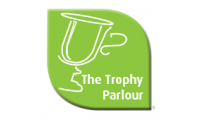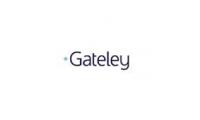A decision is required as to whether the AED should have a paediatric capability and, if so, how the switch between adult and paediatric is achieved.
- National guidance (from the Resuscitation Council UK) states that the incidence of shockable rhythms requiring defibrillation in the paediatric population is very low but can occur. The priority must always be for high quality CPR and getting expert help. However, an AED without paediatric provision can be deployed across all age groups if this is the only available machine. In addition, the paediatric advanced life support guidelines 2015 state that if using an AED on a child of less than eight years, a paediatric attenuated shock energy should be used if possible. Commonly the AED will then restrict the shock energy to around 50 J. In summary, therefore, in a child of less than 8 years of age, if only a generic AED is available, then it should be used. An AED with paediatric provision should be used if possible.
- Several AEDs are available which have a paediatric provision. A principal factor to be considered is how the paediatric provision is activated. Some have two sets of pads – adult and paediatric, with the operator, as necessary, disconnecting one set of pads and then connecting the appropriate set; another has a 'paediatric key' which is inserted into the AED to change it to paediatric mode. The AED will recognise which mode or set of pads are connected and adjust the shock level and audible prompts accordingly. Other AEDs use one set of universal pads and have a Paediatric switch to change the AED into paediatric mode.
- Many CPAD installations incorporate an AED without paediatric provision. The British Heart Foundation, in their latest CPAD initiative, have included as an option an AED with a paediatric switch.
A Community Public Access Defibrillator is made up of two principal elements: the AED and the Cabinet. It is quite possible to mix and match AEDs and Cabinets from different suppliers. Care must be taken, however, to ensure that the chosen AED will fit inside the chosen Cabinet. (Some AEDs will fit inside a smaller Cabinet without their Carrying Case, but will not fit if kept in the carrying case).
Community Public Access Defibrillators are also placed in a variety of locations such as disused telephone boxes. An organisation well versed in such locations is the Community Heartbeat Trust, which has a comprehensive web site.
Some Ambulance Services and Charities have special (financial) arrangements to encourage the installation of AEDs and PADs in particular.
In the Leicestershire area, East Midlands Service (EMAS) currently has their '£999' package – see below:
CHOICE OF CABINET
If the Cabinet is on the public highway liaise with the local authority.
Most External Cabinets need an electricity supply – for an internal thermostatically controlled to keep the Defibrillator at a working temperature during the cold winter months and also to provide power for an internal ight and / or alarm.
The Joe Humphries Memorial Trust, to encourage Sports Clubs particularly to make their AED available 24/7 to the wider community, will assist with the provision and installation OF PAD Cabinets, normally up to £300 per installation. (This can, of course, be utilised in conjunction with other schemes such as the EMAS '£999' package above).
As with AEDs, there are a number of manufacturers / suppliers of Cabinets to house community accessible defibrillators – both for internal and external use.
Cabinets are manufactured in a range of materials: mild steel, stainless steel, aluminium, plastic. Each has benefits. All manufacturers (and suppliers) have web sites with full details on their product/s and costs.

































































